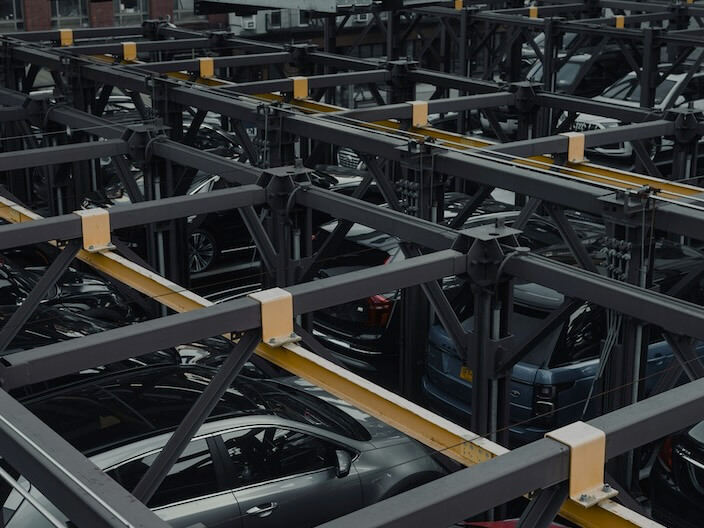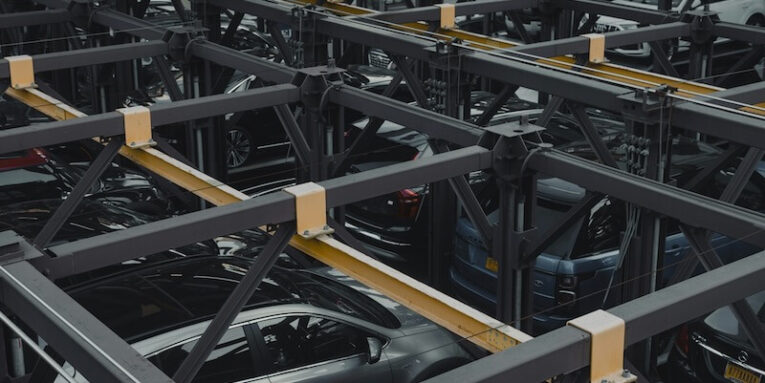Understanding the Mechanics of Modern Parking Solutions
The Evolution of Parking: From Traditional to Mechanical Systems
Parking solutions have undergone an extraordinary transformation over the past few decades, evolving from traditional parking lots and garages to sophisticated mechanical systems designed to maximize space and efficiency. Initially, urban planners relied primarily on surface lots that consumed vast amounts of land, causing urban sprawl and increasing the carbon footprint of city dwellers. The shift began as urban populations surged, necessitating a reevaluation of parking methodologies. Developers started to explore vertical parking and automated solutions, which responded to the increasing demand for efficient land use in metropolitan areas.

Mechanical parking system emerged as a compelling alternative, capable of accommodating vehicles in a fraction of the space required by traditional methods. Innovations such as automated lifts, shuttles, and carousel-style systems streamline the parking process, eliminate the need for ramps and aisles, and drastically reduce the area required for parking. While the influence of technology on our lives grows, the driving force behind these developments is the pressing need for more sustainable practices in urban environments. By moving towards a more systematic approach, cities can conserve space, reduce congestion, and enhance the overall quality of life for their residents.
How Do Mechanical Parking Systems Actually Work?
Mechanical parking systems utilize various technologies to efficiently park and retrieve vehicles. At their core, these systems typically feature a series of lifts, conveyors, and platforms designed to move vehicles automatically within a confined space. For instance, users drive their vehicles into a designated area where the system then takes over, positioning the vehicle onto a platform. This platform transports it to the appropriate parking level, all while eliminating the need for human-operated maneuvers. Systems can range from simple automated platforms to complex installations combining vertical lifts and automated guided vehicles (AGVs).
These systems often use sensors and cameras to identify available spaces and guide vehicles within the structure. In advanced setups, data analytics can further optimize parking processes and predict peak usage times, allowing for better management of the available space. Not only does this complexity enhance the user experience by simplifying parking, but it also introduces a level of safety that traditional systems can struggle to provide. For instance, automated systems can minimize the chances of accidents and theft by reducing pedestrian traffic within parking structures.
The Benefits of Embracing Technology in Urban Parking
The transition to mechanical parking systems presents a wealth of advantages, primarily focused on efficiency, safety, and environmental sustainability. One of the most notable benefits is the significant reduction in the space required for parking. By employing vertical and automated structures, cities can reclaim valuable real estate for more essential urban development projects, such as parks, housing, or commercial spaces.
Moreover, mechanical parking systems significantly improve the user experience. With faster parking and retrieval times, drivers spend less time searching for spaces, which decreases congestion and enhances overall traffic flow. Safety is also paramount, with decreased human intervention lowering the risk of accidents. Additionally, these systems often operate under less dense conditions, allowing for cleaner air and reducing the heat island effect common in traditional parking lots.
The Smart City Revolution: Integrating Parking Technology
How Mechanical Parking Systems Optimize Urban Infrastructure
The integration of mechanical parking systems into urban infrastructure represents a significant stride towards achieving ‘smart’ city frameworks. By incorporating these technologies into the existing urban landscape, cities can benefit from enhancements in traffic management, reduced environmental impact, and improved citizen engagement. Mechanical parking systems can align with various urban technologies, such as real-time traffic monitoring and vehicle-to-infrastructure communication, to create a holistic approach to urban mobility.
Moreover, as part of a smart city initiative, mechanical parking systems can facilitate the rapid evolution of urban transport networks. For instance, the ability to gather and analyze data on parking patterns can inform city planners about usage trends, enabling better policy-making and infrastructure investment. Policymakers can leverage this data to optimize public transport schedules, traffic light timings, and even promote ride-sharing solutions, thereby enhancing overall efficiency and improving the quality of urban life.
The Role of Data Analytics in Parking Management
Data analytics plays an increasingly pivotal role in modernizing parking management, particularly when integrated with mechanical systems. By harnessing big data, cities can gain insights into parking habits, peak utilization times, and the geographical distribution of vehicle movements. This information is crucial for understanding traffic patterns and identifying areas of congestion, enabling authorities to make data-driven decisions.
Advanced analytics can also lead to predictive functionalities. For example, predictive algorithms can forecast busy times based on historical data and environmental influences such as weather and local events. Consequently, municipalities can adjust pricing, promote alternative transportation methods, or prepare for increased demand by suggesting reservable spaces in advance. The consequent reduction in congestion relates directly to fewer emissions, contributing to both environmental and economic benefits.
Case Studies of Cities Winning with Mechanical Systems
Examining successful implementations of mechanical parking systems sheds light on the benefits these technologies can offer. Cities like San Francisco and Paris have embraced automated parking to tackle space constraints in densely populated areas. In San Francisco, the City plans to construct an automated garage that can house over 200 vehicles in just 14,000 square feet, significantly transforming the use of conventional land for parking purposes. By optimizing existing spaces, San Francisco aims to reduce traffic congestion and enable better land usage.
In Paris, the introduction of automatic parking garages has been coupled with data-driven urban planning initiatives aimed at streamlining mobility and reducing pollution. These garages have demonstrated substantial benefits, including improved traffic flow and reduced travel time, while maintaining access to urban amenities. Such case studies represent a growing recognition among city planners that mechanical parking systems are not just a technology trend but essential components of a sustainable and smart urban future.
Environmental Impact: Greener Parking Alternatives
Reducing Carbon Footprint with Innovative Parking Solutions
One of the most pressing issues facing urban environments is the need to reduce carbon footprints as climate change accelerates. Mechanical parking systems offer a pathway towards sustainability through several mechanisms. First, by optimizing the number of vehicles parked within a smaller footprint, these systems inherently reduce land degradation and associated CO2 emissions from traditional paved surfaces. Less land devoted to parking means more space for natural ecosystems, which can absorb carbon and enhance urban biodiversity.
Additionally, by decreasing the time vehicles spend circling for parking, mechanical systems can help mitigate idling emissions, which are significant contributors to urban pollution. This efficiency also aligns well with urban low-emission and zero-emission goals. Innovations in parking technology can be designed to support the deployment of electric vehicles (EVs) by integrating charging stations within mechanical parking systems, further lowering overall emissions in urban environments.
How These Systems Contribute to Sustainable Urban Development
The role of mechanical parking systems extends beyond mere convenience; their contribution to sustainable urban development is increasingly evident. By eliminating the need for extensive parking lots and allocating valuable city land to parks, housing, and commercial developments, cities can steer towards a greener future. Compact parking solutions allow for more efficient land use, preserving natural landscapes and promoting higher-density development, which is vital for reducing urban sprawl.
Moreover, many mechanical parking solutions are designed using sustainable materials and processes, leading to reduced environmental impact during their construction. Their implementation often coincides with urban redevelopment projects aimed at revitalizing and beautifying neglected areas. Consequently, cities witness not just improvements in their environmental performance, but also in quality of life for residents through enhanced green spaces and vibrant communities.
Rethinking Urban Space: The Sustainable Advantage of Mechanical Parking
Rethinking urban space is necessary as cities face increasing populations and escalating challenges related to climate change and sustainability. Mechanical parking systems invite stakeholders to innovate how they perceive urban infrastructure. Instead of viewing parking merely as a necessary evil, urban planners can consider it an opportunity to design more efficient, aesthetically pleasing, and environmentally friendly spaces.
The sustainable advantages of mechanical parking also extend beyond energy efficiency and reduced emissions. These systems promote community engagement by freeing up land for public use and creating pedestrian-friendly environments. An example of this is in urban renewal projects where land previously designated for parking is converted into parks, plazas, or community centers. Such transformations can bring tangible benefits to neighborhood coherence, encouraging communal activities and enriching the local economy.
Future Trends: What’s Next for Parking Innovations?
Integrating AI and Automation in Parking Solutions
The cusp of the future promises more exciting developments in parking innovations, especially through integrating artificial intelligence (AI) and automation. AI technologies will enable parking systems to become increasingly adept at analyzing data to enhance functionality. For instance, AI can manage real-time information collection, forecasting, and decision-making processes in response to changing urban dynamics. Users could enjoy predictive parking availability with personalized notifications informing them of where and when they are most likely to find a spot.
In addition, as autonomous vehicles become more ubiquitous, parking solutions will need to evolve to cater to these self-driving cars. Automated systems can communicate with VRUs (Vehicle Routing Units) to determine parking preferences, and designated parking areas will need to accommodate these vehicles by using efficient spatial organization methods. This could involve dynamic reallocation of spaces based on demand, and the seamless integration of AI in parking management will reshape urban mobility landscapes.
The Rise of Electric Vehicle Charging Integration
The future of parking will also be inextricably linked to the rise of electric vehicles (EVs). Urban planners increasingly recognize the need to integrate EV charging stations within parking infrastructures, particularly in mechanical systems that conserve space while delivering additional services. These charging stations will need to be strategically located within parking facilities to ensure easy access while considering users’ convenience and safety.
As cities endeavor to meet ambitious emissions targets, the rise of electric vehicles will necessitate a corresponding investment in charging infrastructure that complements mechanical parking systems. Future installations will not merely focus on maximizing space but on creating a comprehensive ecosystem where EVs are charged efficiently while minimizing downtime between routes. This integration will also require the cooperation of utility providers to ensure a seamless charging experience for consumers.
Imagining the Parking Experience of Tomorrow: User-Centric Innovations
Envisioning the future of parking inevitably leads us to consider user-centric innovations. As technology continues to seep into every facet of life, parking solutions must prioritize user experience to remain competitive. Future developments may harness augmented reality (AR) for guiding users to their parking spots, utilizing customized mobile applications capable of locating the nearest mechanical parking facility or enabling reservation functionalities to secure spots in advance.
Furthermore, user interface design will become crucial, ensuring that information about parking availability, pricing, and additional services is easily accessible and straightforward. Integrating feedback mechanisms into these systems will allow city planners to adapt and refine services based on user behavior and preferences. Ultimately, creating a seamless user experience is essential for driving the adoption of new technologies, forging the path for more efficient, sustainable urban mobility.
People also read this: Sustainable Practices in Digital Transformation for Future-Proofing

